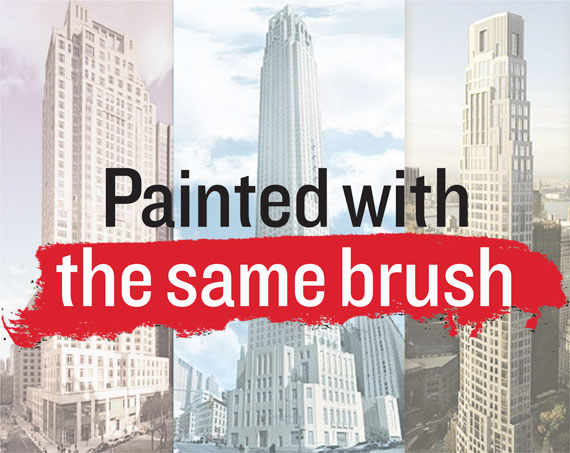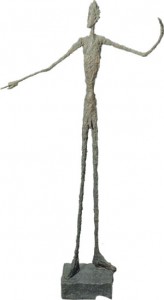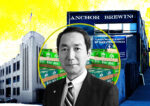Trending
Painted with the same brush
Art and real estate are growing increasingly similar as asset classes while global wealth continues to rise

Art and real estate — like wine and cheese — have long gone hand-in-hand.
So it’s no coincidence that many of New York City’s most successful real estate moguls also have impressive art collections, with works by everyone from Matisse to Warhol. But collecting art is much more than a vanity project these days. Like real estate, art is increasingly being perceived as a safe haven for the storage of wealth.
In fact, the similarities between the two categories have become more striking over the last several years, as the global economic terrain has shifted and worldwide wealth has increased. That’s particularly true in the post-2008 financial crisis environment, where not all traditional investment vehicles are considered guaranteed winners.
In April, Laurence Fink, the chair of asset management firm BlackRock, told an audience at the Credit Suisse Megatrends conference in Singapore that contemporary art, as well as real estate in cities like New York and London, had surpassed gold as “the two greatest stores of wealth internationally today.”
“And I don’t mean that as a joke,” he added. “I mean that as a serious asset class.”
While the advent of exchange-traded funds — securities that act like funds and trade like stocks — has made gold more accessible to average investors, the exclusivity of art and high-end real estate have increased the appeal (and value) of both categories to the über wealthy.
“The [residential condo] towers they’re building in New York right now are very much trophy assets, like A-plus paintings,” said Marion Maneker, publisher of the Art Market Monitor blog. “The fact that a triplex is 1,000 feet in the sky with views of Central Park is very hard to duplicate, just as there are very few of these top paintings.”
Stores of value
Real estate and high-end art are, of course, unlike many other investments — both are status symbols that can be flaunted, but are rather illiquid. “Art and real estate are very similar in that they have to be analyzed in the same fashion,” said Michael Moses, co-founder of the Mei Moses Fine Art Index, which tracks the value and returns on tens of thousands of works through repeat auction sales dating back to the 18th century.
“No two pieces of real estate are the same and no two pieces of art are the same,” said Moses, who also co-founded advisory firm Beautiful Asset Advisors, which consults on the financial performance of the art market.
[vision_pullquote style=”3″ align=”center”]
[/vision_pullquote]
The index, which launched in 2002, shows that “almost every art collecting category has outperformed inflation over the last 50 years,” according to Moses.
“It’s fun to collect and it’s pretty to look at,” Moses added. “[But] very few other asset classes have that capability.”
Real estate is one of those few investments.
“Housing is an investment. It generally outpaces inflation,” said real estate appraiser Jonathan Miller.

Alberto Giacometti’s “Pointing Man”
Both the high-end art and luxury real estate markets have, of course, benefitted from a rapid increase of global wealth. As The Real Deal recently reported, there are now 367 people worth half a billion dollars or more worldwide, according to Wealth X, the global wealth data aggregator.
Just as demand from such buyers has fueled the city’s ultra-luxury condo market and prompted New York developers to ask $100 million-plus for apartments, it has also led to record-breaking prices for high-end art.
For example, Dmitry Rybolovlev, the Russian oligarch who famously purchased a 15 Central Park West penthouse for a then-record-setting $88 million in 2011, bought a Mark Rothko painting through a private sale last August for $186 million — one of the highest prices ever recorded for a painting.
Developer Sheldon Solow, meanwhile, recently sold a bronze Alberto Giacometti sculpture, for $141 million at a Christie’s New York auction.
“The most important factor that drives the price of art is worldwide wealth,” Moses noted.
“And since worldwide wealth at the highest end has been increasing at a relatively rapid pace in recent years, it’s not surprising that those individuals would consider [investing in art].”
“There are so many billionaires these days, that if two of them decide they want [the same] painting, there’s no ceiling to how high the painting can go for,” he added.
Collateral capability
While investors have used real estate as an instrument for financial leverage for decades, art’s rise as a “serious asset class” has also been aided by its increasing viability as collateral.
Suzanne Gyorgy, head of the Art Advisory and Finance team at Citi Private Bank (a division of Citigroup), said using art as collateral is “a big, ever-increasing part of the business.”
“A lot of collectors are using their art as collateral, and it’s becoming increasingly popular,” Gyorgy told TRD. “The people who are doing it are in the financial sector and real estate, or entrepreneurs — collectors who understand how to use leverage.”
Collectors often leverage their works “to invest in other business,” Gyorgy noted. Deloitte and ArtTactic’s 2014 Art & Finance report valued the global art lending market at $9.6 billion per year.
Citi’s minimum loan size for artwork is $5 million, Gyorgy added, with loans often going for “multiples of that.”
And unlike in other countries, leveraged artwork “can stay on the collector’s wall as it’s being used as collateral” in the U.S. and Canada, she said. (In many other countries art must legally be stored when used for such purposes).
But the use of art as an investment vehicle is also far from straightforward. That’s because, as several sources noted, no two works are alike and determining what is valuable can be very subjective. “There are plenty of big-name painters whose works have sold over the last 10 to 15 years at a loss,” Maneker said.
“Art collecting in the broadest sense may have outpaced inflation, but it’s really easy to buy the right painting by the wrong artists or the wrong painting by the right artist,” Maneker added. “Just because there’s increasing value doesn’t mean it’s uniform.”
Indeed, investing in artwork is far more subjective than investing in real estate, Moses noted. “It’s not clear, when art’s coming out of the studio, which one is going to be the best painter,” he said. “But if you put the right building up, you’re probably going to have a winner.”
Gyorgy also noted that many of the world’s most successful collectors “didn’t start collecting for investment.” Instead, she said, their success stemmed from educating themselves, receiving sound advice and developing an eye for good work. Such collectors “don’t view art as an asset class,” she added. “But that said, they’ll say the works they’ve bought have been some of their best investments.”




